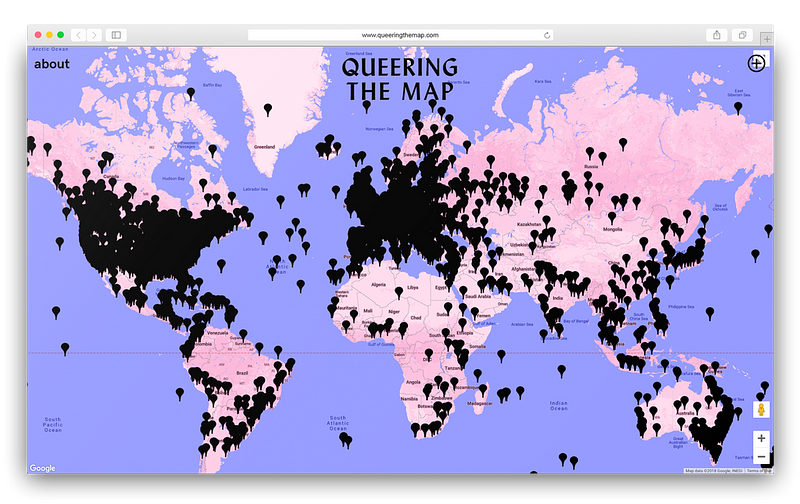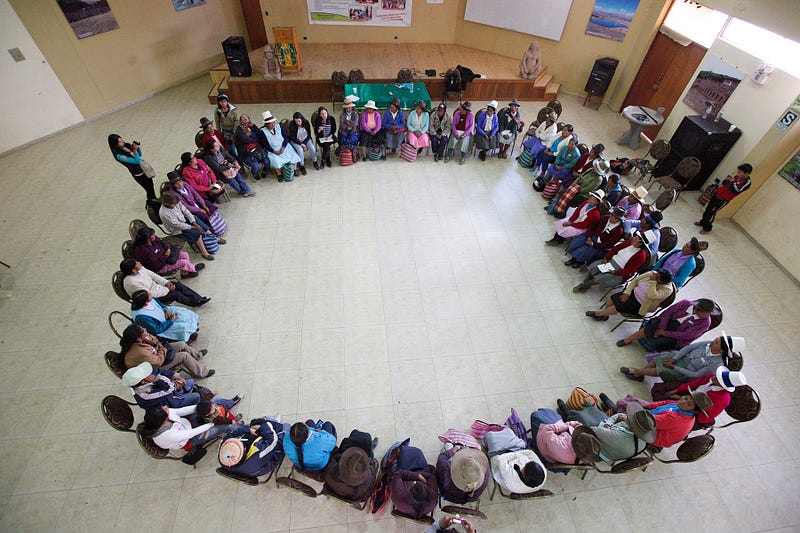
Risks and lessons from the Collective Wisdom field study
Co-creation is greater than the sum of its parts. There may be a complex set of problems that people want to address together. Eventually, there will be outcomes, but these emerge out of the process rather than the other way around.
From our in-depth interviews, we surfaced practical takeaways for the process of co-creation. In this edited excerpt from Collective Wisdom, we present some of our key findings in the forms of risks and lessons.
SIX RISKS OF CO-CREATION
1. Threat to Vision and Editorial Integrity
The co-creative hope may be to flatten hierarchies and generate equity. However the “Tyranny of Structurelessness” can take over, as American activist and political scientist Jo Freeman famously described. A nameless, undefined hierarchy may emerge, which can be even harder to hold accountable.
From an artistic perspective, “the risks are totally incoherent narratives,” said Jennifer MacArthur, a documentary producer. She believes that results can become so generalized and non-specific that they are “outside of anybody’s shared experience or understanding.”
2. Heightened Expectations
The promise of co-creation can heighten expectations of trust, commitment, responsibility, and duration of co-created projects. However, not everyone can commit equally to projects. The sharing of resources, time, credit, and responsibility of a project all need to be examined and negotiated in complex ways.
3. Marginalizing Co-Created Projects
As Anita Lee, an executive producer at the National Film Board of Canada, says: “Artists of color have historically been relegated to “community media.” They have carried a double burden of both representing a community and also of being made responsible to make work about a community. Often this work has also been undervalued as having less artistic merit. Today’s progress means a new generation of artists of color that have more opportunities to create work about anything. Single-authorship has often been denied — even stolen. Does it make sense to forgo authorship now?”
4. Unintended Consequences
Co-creative projects open to public participation can be hacked from the outside. The use of bots and other software can intensify the risk familiar to anyone online. This includes reader comments on news sites and social media, where trolls and organized opposition can drive away productive dialogue.
 “Queering
the Map” landing page
“Queering
the Map” landing pageQueering the Map (2018) is a project that Lucas LaRochelle created to gather queer stories from around the world on a virtual map. It went viral almost immediately after its first media exposure. Just as quickly, the map was attacked by a bot.
5. Theft and Exploitation
There is reason to be suspicious at the way co-creation has come into vogue as a concept, coinciding with dramatic shifts in digital-age economics. Through Uber, Mechanical Turk, Facebook, and fandoms, millions of people are lending their ideas, content, and labor to highly centralized profiteers. Participatory designer Sasha Costanza-Chock warned of media projects where all the “credit, visibility, awards, all end up just accruing to one person but then you call it co-creation so it gets this stamp of democratic legitimacy.”
6. The Risk of Co-optation
As the term co-creation circulates into popular usage, it could fall victim to shiny-new-word syndrome and get trapped in the rapid cycle of co-optation. Co-creation could be sucked up into the vortex of digital empires.
THREE PRACTICAL LESSONS FOR CO-CREATING
1. Gathering, Listening, Dialogue
Co-creative projects begin with relationships. They start by creating a space where people may gather and ask questions. They require a serious commitment to iteration and change along the way. Too often, members of projects stop the listening portion after the first round, and later, the approach is reduced to a one-time consultation or data-mining by those in control. But that is where the problems set in and co-creation ends. With a genuinely co-creative approach, these initial steps are only the first term-setting conversations, not the last.
 “Quipu
Project” is an interactive documentary co-created with local community organizations and Indigenous
Peruvian women to document stories of forced sterilization under Peruvian President Alberto Fujimori
in the 1990s. The result is a participatory oral-history project that culminates in a call to
action. Photo courtesy of María Court and Rosemarie Lerner.
“Quipu
Project” is an interactive documentary co-created with local community organizations and Indigenous
Peruvian women to document stories of forced sterilization under Peruvian President Alberto Fujimori
in the 1990s. The result is a participatory oral-history project that culminates in a call to
action. Photo courtesy of María Court and Rosemarie Lerner.2. Manifestos and Statements of Principles
Manifestos are declarations of the ethics, principles, and values of groups that push new ideas. Allied Media Projects, Data for Democracy, and Platform Cooperativism are only a few of the dozens of organizations that have published sets of common values that define and guide their work.
Helen Haig-Brown and Gwaai Edenshaw co-directed Edge of the Knife (2018) through a community-led process, working with existing Haida governance structures. The first thing the co-creators did was draw up a list of agreed-upon goals and values. They found that the highest priority item was authenticity. This gave the group an imperative to represent Haida culture authentically, always in close consultation with elders.
3. Contracts and Terms of Engagement
Many co-creators have identified the need for instruments that move beyond consent forms by guaranteeing rights and responsibilities to entire communities. In 2009, Screen Australia, a federal media agency, published an influential document called Pathways and Protocols: A Filmmaker’s Guide to Working with Indigenous People, Culture and Concepts. Therein, Indigenous writer and lawyer Terri Clarke offers “advice about the ethical and legal issues involved in transferring Indigenous cultural material to the screen.”
Ellen Schneider of Active Voice has been developing customized tools called “Pre-Nups for Partners.” For over a decade, she’s been working with funders, filmmakers, and nonprofits to navigate the increasingly complex nuances of co-creative partnerships that go beyond the mold of conventional filmmaking.
Meanwhile, cultural groups are exploring Cultural Community Benefits Agreements (CBAs), that spell out the terms of engagement, especially for outside organizations coming in to work with local groups. These cultural agreements pick up on the model of CBAs that have become common in urban contexts to negotiate terms for local communities when developers arrive to transform neighborhoods.
Community-benefit agreements and contracts are not panaceas. Veterans of co-creation are acutely aware of their pitfalls and problems but do use them to guarantee certain basic rights, alongside bigger policy and legislative concerns affecting the role of government. This includes how we define and use public space, the commons, and how we will govern ourselves and shared resources into the future.
This article is part of Collective Wisdom, an Immerse series created in collaboration with Co-Creation Studio at MIT Open Documentary Lab. Immerse’s series features excerpts from MIT Open Documentary Lab’s larger field study — Collective Wisdom: Co-Creating Media within Communities, across Disciplines and with Algorithms — as well as bonus interviews and exclusive content.
Immerse is an initiative of the MIT Open DocLab and The Fledgling Fund, and it receives funding from Just Films | Ford Foundation and the MacArthur Foundation. IFP is our fiscal sponsor. Learn more here. We are committed to exploring and showcasing media projects that push the boundaries of media and tackle issues of social justice — and rely on friends like you to sustain ourselves and grow. Join us by making a gift today.